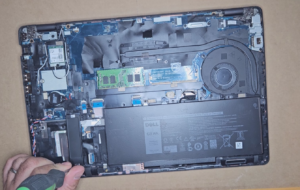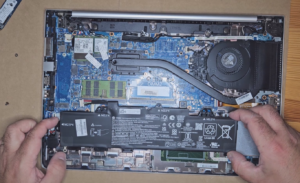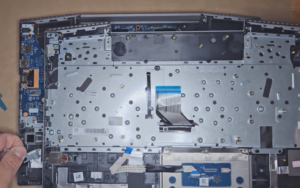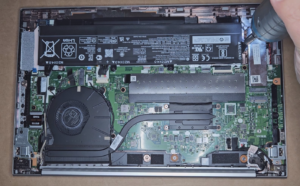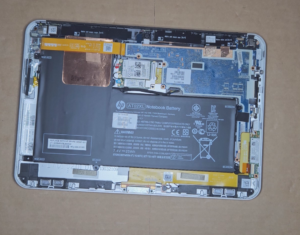
Are you noticing your Dell Latitude E6230 overheating or not performing as efficiently as it used to? It might be time to replace the thermal paste, a crucial yet often overlooked component in maintaining the health and performance of your laptop. The thermal paste is a heat-conductive material that sits between your CPU and its heat sink, ensuring efficient heat transfer. Over time, this paste can degrade and cease to perform its function effectively, leading to potential overheating and system instability.
Replacing the thermal paste is a cost-effective way to improve your laptop’s thermal management. This guide will walk you through the process, ensuring that you can confidently open up your Dell Latitude E6230 and apply fresh thermal paste to the CPU.
Preparation: Gathering the Right Laptop Parts and Tools
Before diving in, it’s essential to have the right tools and replacement parts on hand. You’ll need a high-quality thermal paste, a set of precision screwdrivers, and an anti-static wristband to prevent any static damage to your laptop components. Opting for quality laptop parts will ensure the longevity and reliability of your repairs.
Step 1: Safety First
Ensure your laptop is turned off, unplugged, and the battery is removed. Work on a clean, flat surface and use the anti-static wristband to protect the laptop parts from potential electrostatic discharge.
Step 2: Accessing the Internals
Flip your Dell Latitude E6230 over to remove the screws from the bottom panel. Carefully pry open the case, usually starting from one corner and working your way around the edges. This will expose the internals of your laptop, where you’ll see the fan, heatsink, and the CPU beneath them.
Step 3: Removing the Heat Sink
Unscrew the heat sink from the motherboard. You’ll notice that it’s typically held in place by a few screws. Once loose, gently lift the heat sink, revealing the old thermal paste on the CPU.
Step 4: Cleaning Off the Old Thermal Paste
Using a soft cloth or a non-abrasive wipe soaked in isopropyl alcohol, gently clean off the old thermal paste from both the CPU surface and the heat sink. It’s important to remove all residue for the best thermal conductivity.
Step 5: Applying New Thermal Paste
With a steady hand, apply a pea-sized amount of new thermal paste to the center of the CPU. It’s critical not to overapply, as excessive thermal paste can lead to suboptimal heat transfer and potentially damage other laptop parts.
Step 6: Reattaching the Heat Sink
Carefully place the heat sink back over the CPU, ensuring it aligns with the screw holes. Tighten the screws in a cross pattern to apply even pressure on the CPU.
Step 7: Reassembling the Laptop
Before closing up your laptop, it’s good practice to clean any dust from the fans and interior to optimize cooling efficiency further. Once done, replace the bottom panel and tighten all screws.
Step 8: Testing
After your laptop is reassembled, power it on. Monitor the system’s performance and temperature levels to ensure the new thermal paste is doing its job effectively.
VIDEO guide:
Replacing the thermal paste on your Dell Latitude E6230 can seem daunting, but it’s a straightforward process with the right guidance and laptop parts. Not only will this maintenance help your laptop run cooler, but it can also extend the life of your device, making it a wise investment of time and effort.
Pro Tips:
- Always consult your laptop’s manual for specific disassembly instructions to avoid damaging any delicate parts.
- Choose a high-quality thermal paste for better thermal performance and longevity.
- If you’re unfamiliar with laptop repairs, consider watching tutorial videos or consulting with a professional.
By following these steps, you’ll ensure that your Dell Latitude E6230 remains a reliable workhorse, ready to tackle any task without breaking a sweat. Remember, regular maintenance, including cleaning and replacing thermal paste, is key to optimal laptop performance.
